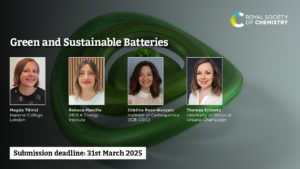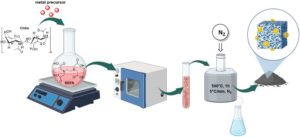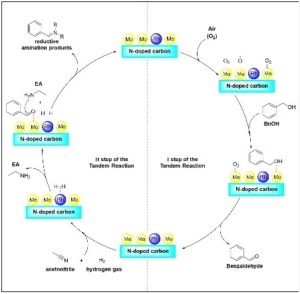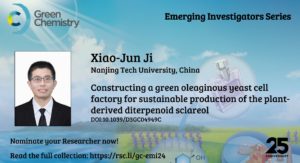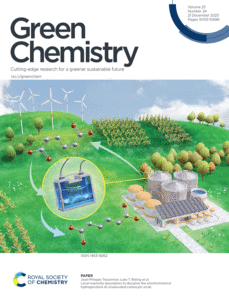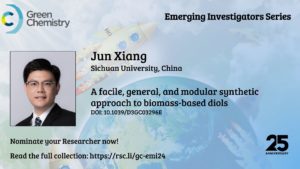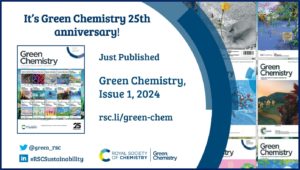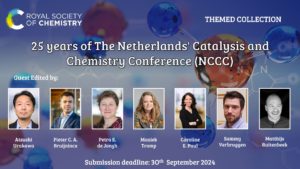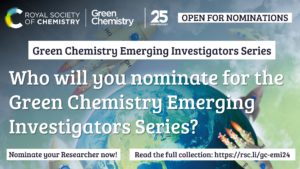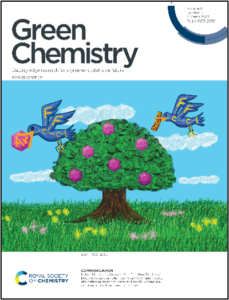Green Chemistry, Journal of Material Chemistry A, Sustainable Energy & Fuels and RSC Sustainability are delighted to announce a call for paper for their latest cross journal themed collection on Green and Sustainable Batteries, Guest Edited by Magda Titirici (Imperial College London), Rebeca Marcilla (IMDEA Energy Institute), Cristina Pozo-Gonzalo (Institute of Carboquimica ICB-CSIC) and Theresa Schoetz (University of Illinois at Urbana-Champaign).
About this Themed Collection
This themed collection will showcase cutting-edge research, advancements, and remaining challenges in realising the holy grail of batteries: sustainable batteries that balance performance, cost and environmental sustainability. The collection aims to uncover new research opportunities in this field by featuring multidisciplinary research on alternative battery chemistries, sustainable electrolytes, sustainability assessment (including assessing materials criticality and its environmental impact), battery recycling, electrodes manufacturing for improved performance, understanding and preventing degradation and improving life time, design for disassembly and technoeconomic assessment among other topics closely fitting to the sustainable battery topic.
Preferred topics include but are not limited to:
- Alternative battery chemistries to Li including but not limited to Na, K, Al, Zn, dual ion, proton or organic batteries etc
- Li based batteries using non-critical materials to include but not limited to alternative anodes to graphite based on abundant elements and critical metal free cathodes including sulfur, air, etc
- High energy density batteries without excess of Li also known under the more popular name of “anode-free” or “anodeless” batteries, where the amount of Li is reduced while ideally addressing the sustainability of all other components.
- Sustainable electrolytes, including but not limited to concentrated water in salt electrolytes, sustainable (bio)polymer-based electrolytes, ionic liquids, deep eutectic solvents, new organic solvents/salt electrolyte design, solid electrolytes without critical metals.
- Life cycle assessment studies of Li and other battery technologies, ideally not only from a global warming perspective but also with impact on ecosystems, biodiversity, water pollution and human rights
- Assessment of metal criticality for battery research, including but not limited to a definition of criticality, geopolitical factors, and comparison of different geographic regions.
- Techno economic analysis of batteries; Does more sustainable means more expensive and what are needed mitigation strategies for lowering the cost of new battery technologies?
- Manufacturing for disassembly from cell to pack level. What options are there to move away from the current unsustainable manufacturing practices?
- Electrode design for improved performance and sustainability including but not limited to new electrodes design, current collector free electrodes, dry electrode manufacturing, nontoxic solvents and binders, tick/thin electrodes, etc
- Understanding the degradation of sustainable batteries using in operando characterisation
- Improving battery lifetime, for example using sensors and self-healing battery components
- Industrial perspective on creating the next generation sustainable batteries.
- Battery recycling of Li ion technologies but also of merging battery technologies
- Other innovative technical strategies for sustainable batteries
This call for papers is open for the following article types:
- Communications
- Full papers
- Reviews
About the journals
The following RSC journals are supporting the collection:
- Green Chemistry – A multidisciplinary journal providing a unique forum for the publication of innovative research on the development of alternative green and sustainable technologies that is likely to be of wide general appeal
- Journal of Material Chemistry A – A high quality journal Publishing work of international significance on all aspects of materials chemistry related to energy and sustainability.
- Sustainable Energy & Fuels – An interdisciplinary journal publishing high quality scientific research that will drive the development of sustainable energy technologies, with a particular emphasis on innovative concepts and approaches.
- RSC Sustainability – An inclusive journal publishing solutions-focused research dedicated to solving sustainability challenges
How to Submit
If you would like to contribute to this themed collection, you can submit your article directly to the online submission system for Green Chemistry, Journal of Material Chemistry A, Sustainable Energy & Fuels or RSC Sustainability. Please answer the themed collection question in the submission form when uploading your files to say that this is a contribution to the Green and Sustainable Batteries Themed Collection
Open for Submissions until 31st March 2025


